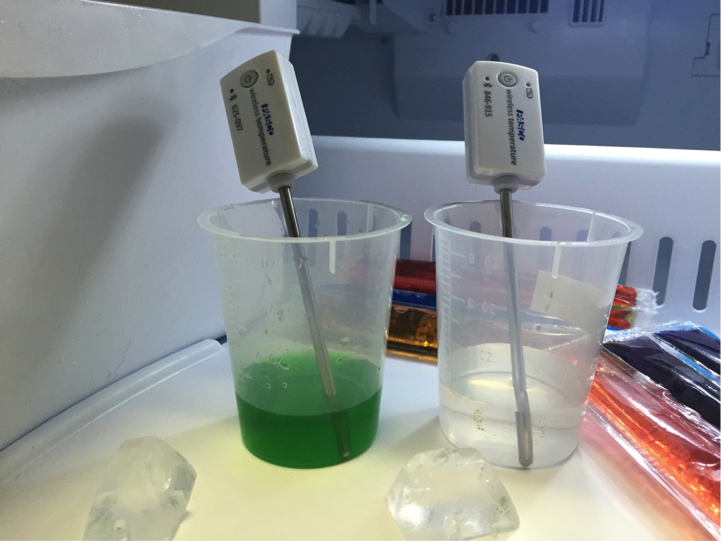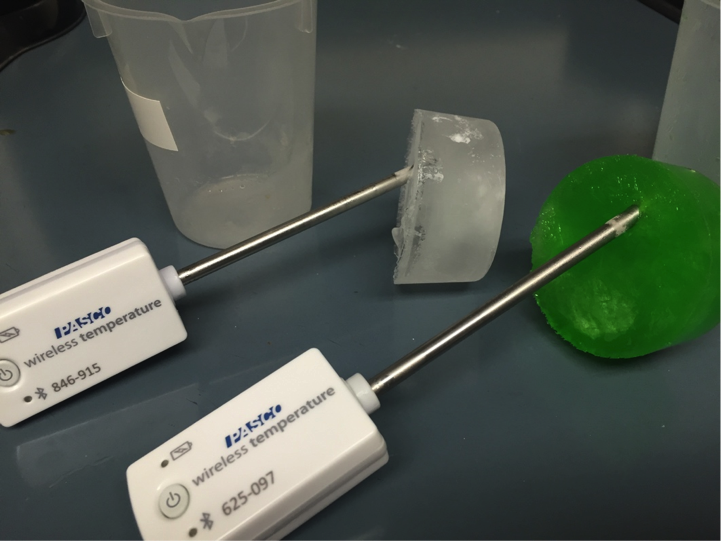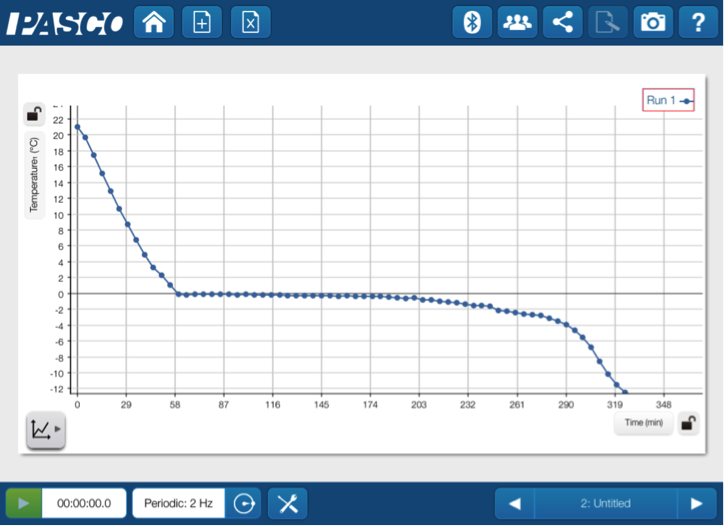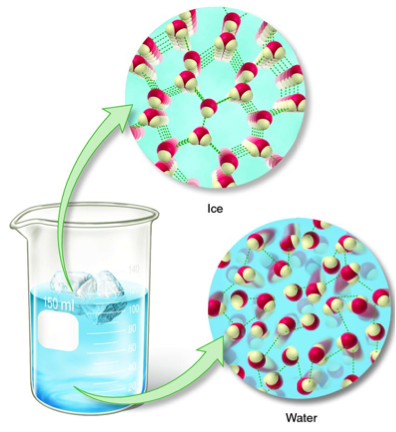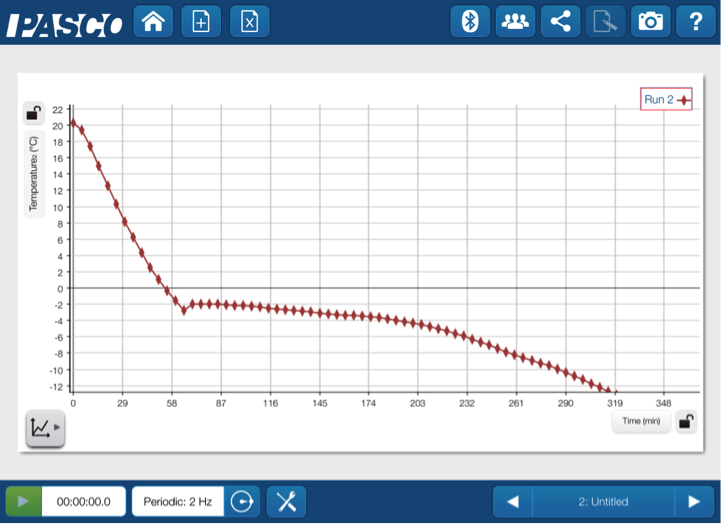Popsicle Phase Change
Phase changes are an important part of chemistry and physical science curriculum — and Freeze Pops are an important part of everyone’s summer. What better way to take the edge off the summer heat than combining the two to make a cool activity that addresses changing states of matter?
In the science lab, temperature measurements will help crystalize students’ thoughts around freezing and connect the phase change with particle motion.
To set up this cool experiment, you’ll need to get a base line temperature change of pure water as well as the temperature change of the Freeze Pop. First, pour some water into a plastic container and add a Wireless Temperature Sensor. Next, we’ll open two Freeze Pops (that haven’t been frozen), pour the contents into another plastic container and add a second Wireless Temperature Sensor. Now you can use SPARKvue’s remote logging capabilities and put everything in the freezer. And if you really want to sweeten the inquiry, add some additional Freeze Pops as a tasty post-experiment treat!
The Wireless Temperature Sensor can remotely log data for days, but we’ll only needed a few hours. After letting the samples set overnight, it was time to check the results.
The samples look frozen. Let’s check SPARKvue to see if the data is just as solid.
I started by checking out the water. No brain freeze here— that’s just cool data.
The students will notice that the temperature dropped to 0oC, and stayed there before dropping again to the temperature of the freezer. But what’s so special about 0oC and why the plateau?
The students may know that this is the freezing point of water. But they may not realize that the water sample can’t get below the freezing point until the entire sample is frozen. This is where particle illustrations become important.
As the water molecules cool, they slow down into a regularly repeating pattern forming a solid. But why the plateau? As long as there are some faster, freely-moving water molecules in the sample, there will be an equilibrium between the liquid water and the ice keeping the temperature constant. Once all of the water molecules are moving slow enough to be frozen and in the solid state, then the temperature can begin to drop again.
Is the same thing happening with the Freeze Pop? It’s a good thing we have hours worth of data to find out!
This sample, which is not pure water, froze at a temperature that is lower than zero. The freezing point is depressed— but you shouldn’t be. This always happens with a solution. The other particles in the sample (sugar and dyes mostly) get in the way of the solid-liquid water equilibrium and lower the Freeze Pop freezing point.
Students may also note that there is not a flat plateau during freezing. As the water freezes out, the sample gets more concentrated with the “other” particles, depressing the freezing point even more. The freezing slope isn’t steep enough for sledding, but it is definitely noticeable. Once the entire sample is frozen, the temperature decrease is more dramatic.
The concept of freezing point depression is important and it has real practical applications— from making Freeze Pops and ice cream, to car antifreeze and melting ice in the winter.
Now your students can not only understand freezing, but they can explore factors that would affect freezing point depression. I am sure this would open up the lab to 31 flavors of ice cream inquiry!

